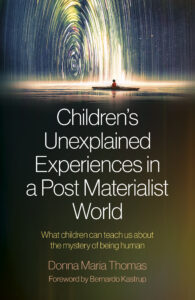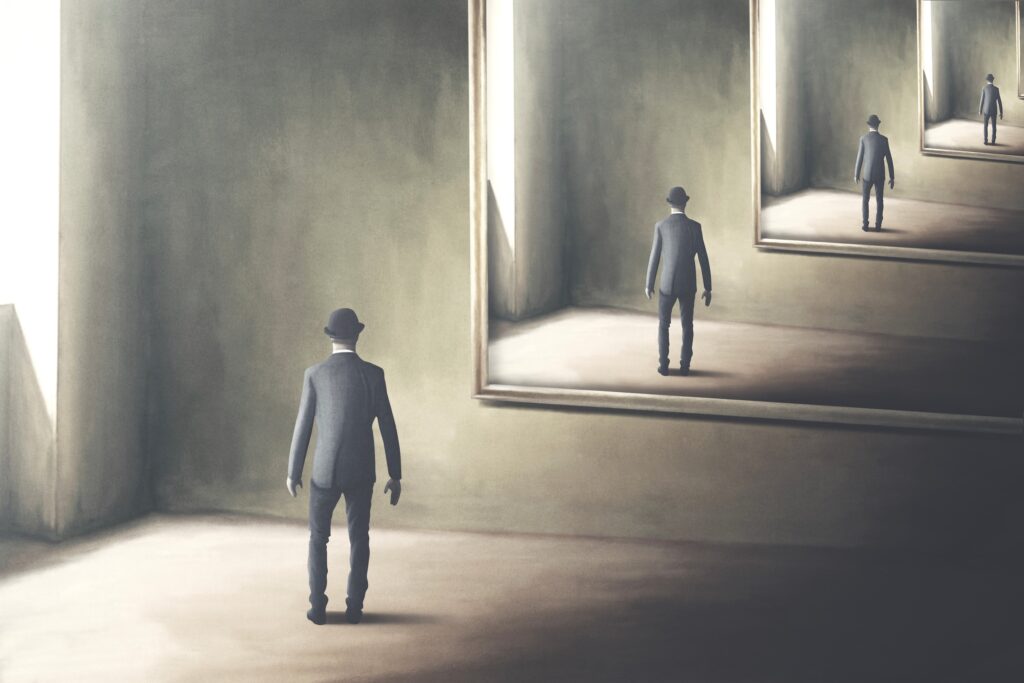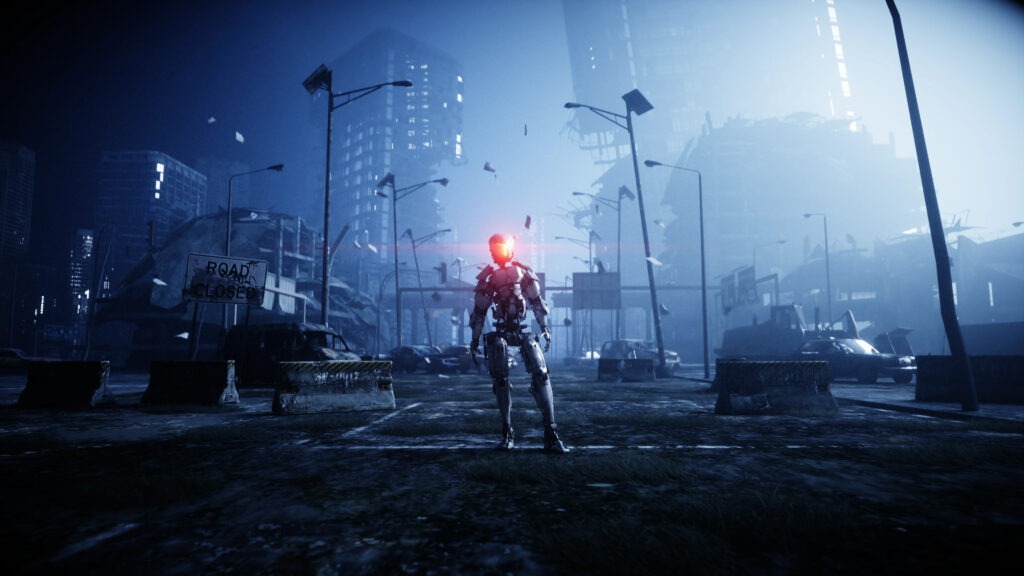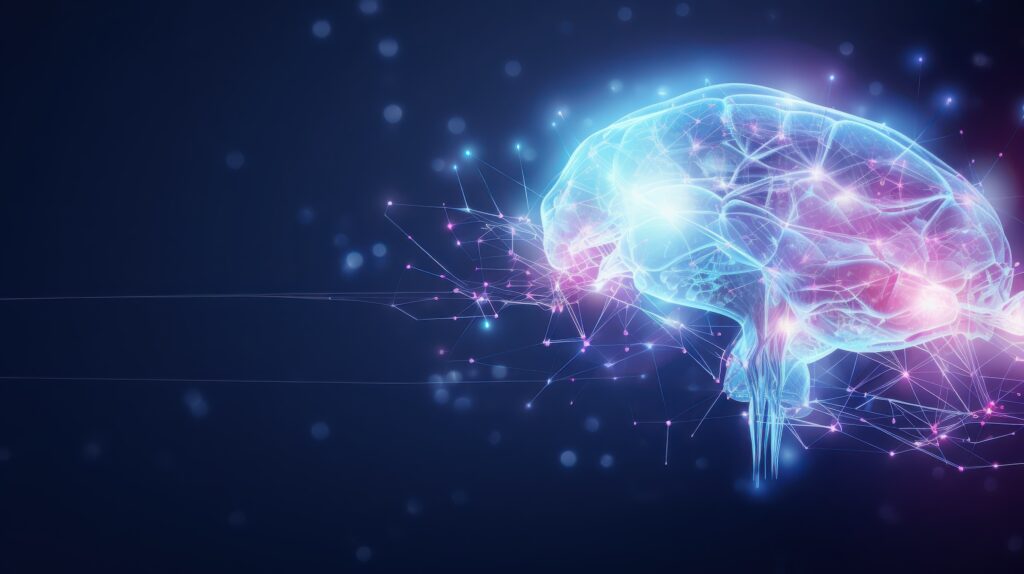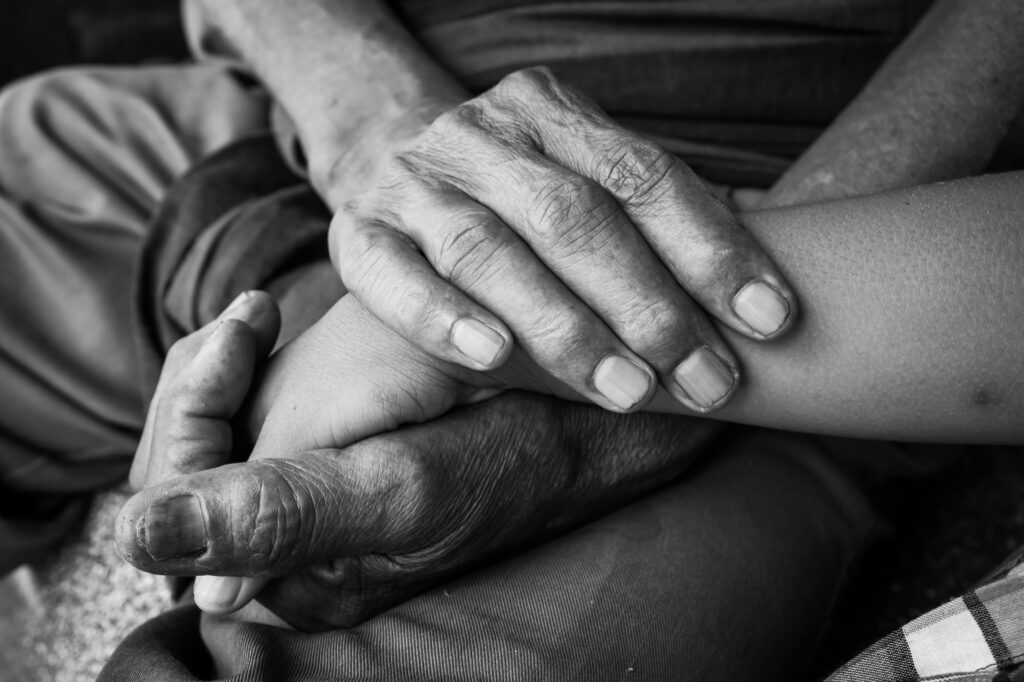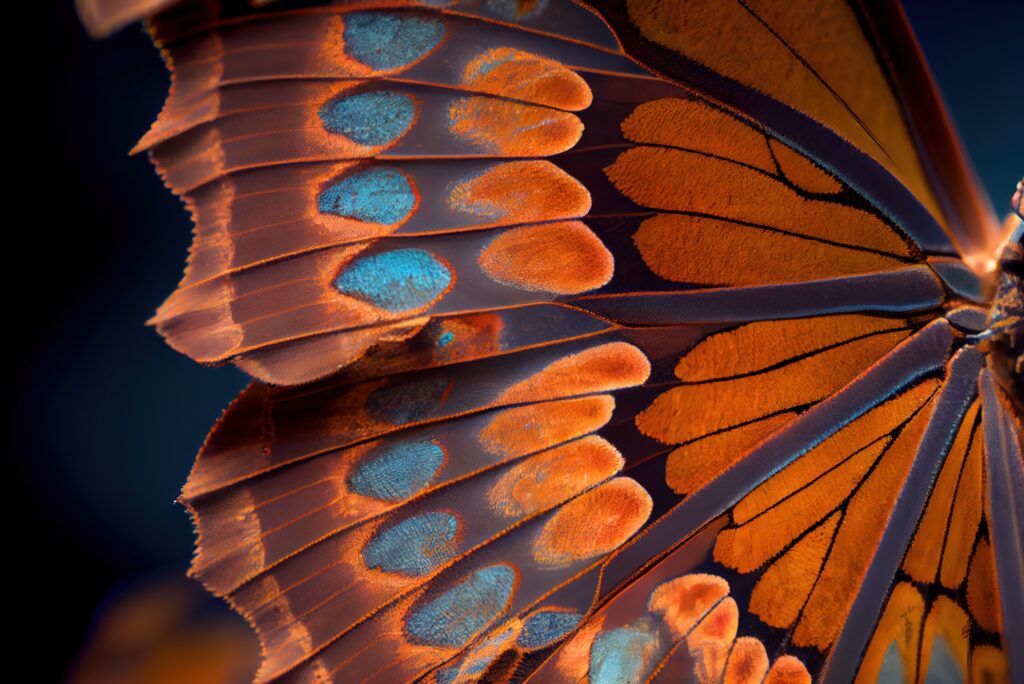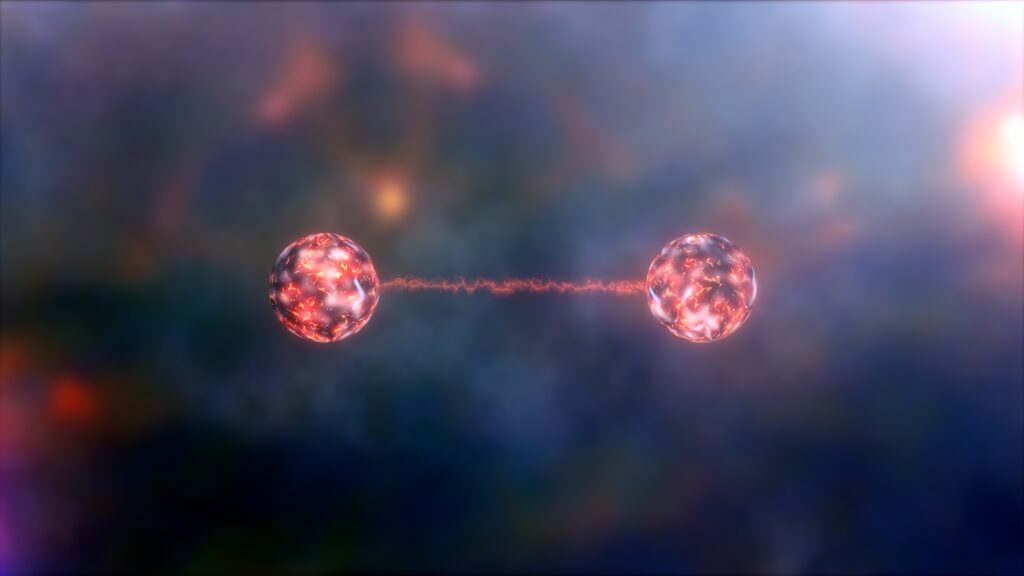Medical Conditions and Unexplained Experiences of Children
Reading | Psychology
![]() Donna Thomas, PhD | 2023-08-13
Donna Thomas, PhD | 2023-08-13
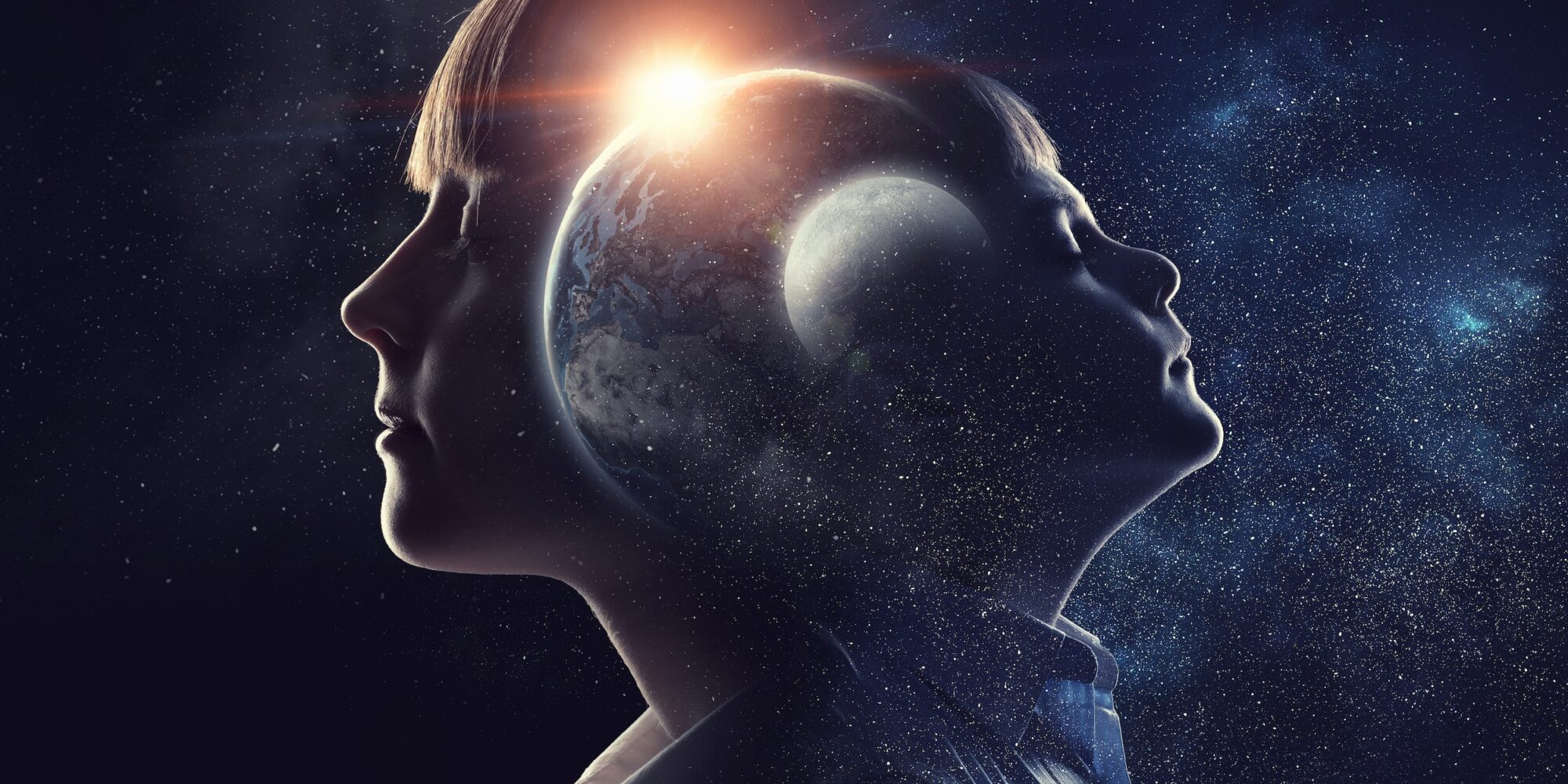
This edited extract is taken from Chapter 9 of Children’s Unexplained Experiences in a Post Materialist World (Essentia Books, 2023). The essay interrogates the relations between mind and matter through the lens of children’s unexplained experiences and medical conditions. Conditions that can affect regions of the body through inflammation, such as epilepsy, PANS/PANDAS and narcolepsy, are examined against reports of increased extra sensory experiencing in children. Epigenetics is used as an example to show how ancestors, in the form of great grandparents, may be the true progenitors of children’s psychic contents, fused within a participation mystique (Jung). But how can another’s mind contents affect the physical bodies of their children? Ian Stevenson’s research on reincarnation and children’s birthmarks raises similar questions. These ideas are covered in this essay, forcing an interrogation into the nature of mind and body and their assumed status as being two distinct and separate things.
Children may be accessing experiences from a collective field, which corresponds to their states of consciousness and extra sensory experiences. But what about the body? Making connections between minds and minds entails a smoother step than trying to explain connections between minds and matter. Ian Stevenson’s book Where Reincarnation and Biology Intersect shows how children’s birthmarks correspond with their past life memories. Children would report events from previous lives, including how they died. Their birthmark or defect would match the injury of the deceased person (who the child claimed to be in a previous life). Stevenson notes that having corresponding birthmarks and defects are important as they provide more objective evidence for reincarnation than just memory. Photographs and post-mortem reports from deceased persons provide interesting data that show significant links between the child’s memory and actual events. The data also raises questions about the relationship between mind, body and reality. How is it that the imprint of injuries sustained by one person at a point in time can manifest in the body of a child at another point in time—with the added mystery of the same child accessing the memories of the deceased person?
The wealth of data that Stevenson has generated has astoundingly been ignored by mainstream academia and social/ health policy research. One reason is how the idea of reincarnation entails a reality that is contradictory towards dominant scientific narratives. Children with medical conditions that affect the body and brain can experience unexplained phenomena (past life experiences, having visions, hearing voices and sounds etc.). Some children involved in my own studies have been diagnosed with conditions such as epilepsy, narcolepsy and a relatively new condition called PANS/PANDAS (Pediatric Autoimmune Neuropsychiatric Disorder). What these conditions all have in common is how they can affect regions of the brain, usually through inflammation. Historical studies have made some links between brain abnormalities in children and psychic experiences. One such example is research conducted by a Californian psychologist in the early 1960-70s, Eloise Shields [i]. Shields’ research was conducted in a school for children with disabilities. Shields notes the relationship between brain impairment and telepathy in children aged between 7-21 years:
It appears [these children] can display amazing degrees of telepathy and somewhat above average clairvoyance… these children lack inhibition in speech and behaviour and are at an early stage of language development.
Shields (1962)
Shields considers the striking rapport between groups of children in her study despite their communication difficulties (delayed speech development etc.). The children in Shields’ study had experienced damage to their brains through illnesses such as meningitis and injuries sustained through birth. They had a significant reduction or impairment in brain activity. Experience may be more conscious-rich or extra sensory when there is a reduction in brain activity caused by impairment or inflammation. Studies published in 2012 by Carhart-Harris et. al. measured the neural correlates of the psychedelic state as determined by fMRI studies with psilocybin. The results were surprising. Psilocybin caused decreased activity and connectivity in the brain’s key connector hubs, enabling a state of unconstrained cognition or rich conscious experiences [ii]. Alison Gopnik suggests psychedelic studies show how a deactivation in the pre-frontal cortex systems can mirror young children’s brains, in terms of plasticity, flexibility and design for experience [iii]. Gopnik argues that consciousness becomes narrowed with age, with adults “knowing more but seeing less.” If reduction in brain activity can activate unconstrained cognition, it may follow that any children with conditions that affect neural activity might have a higher incidence of extra sensory experiencing [iv].
Children, Epilepsy and Unexplained Experiences
The World Health Organization (WHO) estimates that there are 50 million people worldwide who have epilepsy, making it one of the most common neurological conditions globally. Epilepsy is characterized by seizures that are caused by excessive electrical activity in the brain. The effects and impact of epilepsy vary depending on which part of the brain is affected. Studies on epilepsy suggest 30% of people with epilepsy experience behavioral and psychiatric problems. [v] Like children’s unexplained experiences, persons with epilepsy are often studied in clinical contexts, from predefined clinical theories. King et. al. (2015) ran a qualitative research study with nine adults with epilepsy. The aim of the study was to gather meanings about the living experiences of people with epilepsy, offering “a voice for an often ignored and stigmatized group.” [vi] The findings show how people with epilepsy (included in their study) qualify their experiences as transpersonal. Their experiences share the qualities of phenomena such as mystical states, NDEs, OBEs and more. King et. al. (Ibid.) identify themes that emerged from participants in the study. People described their experiences of seizures as moving through a portal to different realities, receiving a download of wisdom and engaging with other presences. Two participants reported mediumistic capabilities and most participants reported how their experiences shaped their sense of self. These experiences were transformative. These results, especially the experience of moving through tunnels, are very similar to findings from my own studies with children who are diagnosed with epilepsy.
An interesting case study was published in 2004 by parapsychologist Alejandro Parra, about the recurrent spontaneous psychokinesis (RSPK) experiences of 18-year-old Andres Vernier [vii]. The household had been experiencing strange happenings, poltergeist activity in the form of large stones thrown around the home and walls and furniture destroyed. Andres had frontal lobe epilepsy, experiencing blanks since age nine and seizures from 12 years, along with a range of other emotional issues. The poltergeist activity was intense and frequent, only stopping when Andres attended the hospital and had taken medication to sleep. After extensive tests and support from different experts, Andres’ family concluded that he was a PK agent—creating the poltergeist activity with his mind. The author conjectures a model that may explain the PK activity caused by Andres, as a displacement of his repressed aggression. The emotional energy and difficulties for Andres to communicate create a PK force.
Narcolepsy also affects brain functioning and can cause sleep paralysis and hallucinations in those with the condition. It is extremely rare for children to have narcolepsy and studies note that it is a condition that may be under-reported. One little boy I researched, Cai, was diagnosed with narcolepsy and cataplexy at the age of five years. Cai was six years old when he first shared his experiences with me. He has reported a range of unexplained experiences (seeing apparitions of people, animals and precognition). Cai reported seeing spiders in different rooms in his home. Medical literature shows that seeing spiders is also common in people with epilepsy. Common experiences for people with narcolepsy are sleep paralysis and hallucinations, explained as the effects of a loss of hypocretin-producing cells in the posterior hypothalamus (a chemical imbalance in spinal fluid). The neuroscientific model does not advance an understanding of hallucinations and the experiential authority of people is never sought. In some cases, hallucination does not appear to be an adequate explanation. [viii] The above example comes from an article I published in 2021, about the healing potential of children’s unexplained experiences. [ix] Even in frightening experiences, children report positive after-effects that seem to continue. For example, one young person reported a withdrawal from medication following a peak experience. For Cai, the presence of scary spiders and strange beings in his home prompted an affinity with the superhero Spiderman. His identification with a powerful superhero gave Cai confidence and feelings of empowerment
Epigenetics, Children and a Participation Mystique
Troubling the distinction between mind and matter are studies conducted in the field of epigenetics. Since the late nineties, Professor of Psychiatry and Neuroscience Rachel Yehuda has studied epigenetic mechanisms in the intergenerational transmission of stress effects, such as PTSD and nightmares—in other words the biology of post-traumatic stress disorder. Yehuda and colleagues have evidenced how parental trauma can cause genetic alterations in their children. [x] These studies show how biological alterations caused by trauma in Holocaust survivors were also found in their children and grandchildren—who had not been exposed to trauma or any psychiatric disorder. As discussed earlier with PANS/ PANDAS children, here is a case of children who have not directly suffered intense trauma yet are experiencing traumatic symptoms and mental material (in the form of memories and nightmares). Yehuda found that children from Holocaust survivors had the same neuroendocrine or hormonal abnormalities that were found in Holocaust survivors. Findings from the many studies conducted on groups such as pregnant mothers who experienced the 9/11 bombings and their children, “yield a cogent understanding of how individual, cultural and societal experiences permeate our biology.” [xi] How we experience reality through our perceptual field influences not only our own bodies, but those of our children and grandchildren. In a recent interview with Yehuda, the host suggested that Yehuda’s research in some ways resonated with passages from the bible: [xii]
The fathers ate sour grapes, and the children’s teeth are set on edge.
Ezekiel,18:1-4, 25-32
This ancient quote refers to children’s misfortune to carry the burden of the ancestors, which Yehuda is evidencing through genetic studies. The biblical quote refers to the father, yet Yehuda’s research is showing that it is the mother who may transmit trauma. When studying mothers caught up in the 9/11 tragic attacks, Yehuda learned how there was a trimester effect on cortisol levels in their babies, showing how some of the differences between maternal and paternal trauma and risk may be linked with the special in-utero changes to developmental programming. This potential evolutionary move can create greater stress levels in children and adults in environments that do not meet the full repertoire of responses (for example, a stress response to starvation in a country that may not have this issue).
What is striking about Yehuda’s observations is the importance of others. Holocaust survivors, who were known to not access support, got through because of the presence of another—how we behave towards each other can affect our molecular biology. Whatever matter is, it appears to be directly affected by mental processes and our subjective perceptions and experiences. Yehuda’s studies with trauma-experienced expectant mothers resonates with Stanislav Grof’s insights about foetus experiences of stress or toxicity in-utero. The idea that children inherit their grandparents’ trauma responses (chemically and psychologically) takes us back to Carl Jung’s observation about great-grandparents being the true progenitors of children’s psychic contents, fused within a participation mystique.
Children and The Mind-Body Problem
Children’s experiences reported in this essay raise questions about the relationship between mind and body. Children whose bodies are inflamed experience unexplained phenomena and drastic alterations to their usual person, showing important correlations between mind and matter. Children inherit mental processes that affect their biology, from grandparents and beyond, and states such as dissociation, epilepsy and narcolepsy can trigger unexplained experiences.
The mind-body problem has been cited as one of the most difficult problems to solve in science and philosophy. Queries that gather around this problem include: are they two separate things? How are they synchronistic and where are they held? If they are made of the same stuff, which is primary (mind or body)? Despite the persistent mystery, the mainstream metaphysics of Cartesian Dualism (an aspect of Physicalism) assumes that matter or the body is primary; and that mind/consciousness is an epiphenomenon of physical objects (such as the brain). Despite science advancing this notion in different ways, rendering physicalism as a worn-out model, this is not reflected in the lifeworlds of everyday people. Systems are geared to supporting and enacting this dominant way of thinking about human beings and our relationship to our environment. This can be seen in biomedical models and the medicalization of natural human responses to inner and outer circumstances.
I have only so far met one child who experienced spontaneous healing of a medical condition, following an intense peak experience. This is an area that I have not yet fully explored with children. There is an abundance of research into the relationship between well-being and unexplained experiences in adults, which show significant and enduring positive effects. Studies that examine adult unexplained experiences report how these adults have a similar or better psychological adjustment compared to the average population. Physical healing experiences have also been reported in research studies. For example, Larry Dossey notes that healing is a neglected aspect of NDEs. In a 2014 paper, Dossey includes case examples of people spontaneously healing from the very diseases that caused them to die. One example is the case of Mellen-Thomas Benedict, who had an NDE in 1982. Benedict was dying from an inoperable brain tumor. Benedict died for 90 minutes. Within three days he felt well and happy and was discharged from the hospice where he thought he would end his days. Three months later, Benedict returned to see his doctor to be tested again. A follow-up brain scan revealed the brain tumor had disappeared. Western biomedicine would “explain healing experiences as lucky coincidences even though similar stories have been reported over the millennia.” [xiii] But the growing evidence of cases such as Benedict’s are starting to challenge the biomedical model.
In health science, the placebo and nocebo effects show promise for advancing ideas to address the mind-body problem. Placebo and nocebo are used in drug trials to show the effectiveness of new drugs. These trials take different control groups, giving one group the drug and the other group a placebo. With some conditions, such as epilepsy, Crohn’s disease and Parkinson’s disease, placebos work well, showing improvements for patients. Nocebo works the other way, creating negative side effects. There is a paucity of research into placebo and nocebo effects despite the potential of these phenomena to inform deeper understandings about the mind/body problem. The ability of the mind to create side-effects in nocebo drug trials, or relief from pain and healing in placebo trials, needs better explanations than those presented through the biomedical literature. As does the phenomenon of children having birthmarks that correspond with past lives, or people healing their bodies through the mind.
Notes
[i] Shields, E. (1962). Comparison of children’s guessing ability (ESP) with personality characteristics. The Journal of Parapsychology, 26(3), 200.
[ii] Carhart-Harris, R. L., Erritzoe, D., Williams, T., Stone, J. M., Reed, L. J., Colasanti, A., … & Nutt, D. J. (2012). Neural correlates of the psychedelic state as determined by fMRI studies with psilocybin. Proceedings of the National Academy of Sciences, 109(6), 2138-2143
[iii] Gopnik, A. (2020). Why Babies are more Conscious than we are? BrainMind Summitt, Stanford University, https://www.youtube.com/watch?v=gtG7hn9Mr3g.
[iv] Thomas, D. (2022). Playing in the Field: Exploring the nature and emergence of extra sensory experiences with children. Journal of Parapsychology, 86(2).
[v] Macleod, S., Ferrie, C., Zuberi, S. (2005). Symptoms of Narcolepsy in Children Misrepresented as Epilepsy. Epileptic Discord, 7(1), 13-17
[vi] King, L., Roe, CA and Roxburgh, EC (2015). A transpersonal exploration of epilepsy & its numinous, cosmic states. Paper presented to: Psychology Postgraduate Affairs Group (PsyPa) Annual Conference, University of Glasgow, 22-24 July 2015.
[vii] PARRA, A. (2004) Pk Occurrences, Epilepsy and Repressed. The Paranormal Review.
[viii] Radin, DI, and Rebman, JM (1996). Are phantasms fact or fantasy? A preliminary investigation of apparitions evoked in the laboratory. Journal of the Society for Psychical Research, 61, 65-87
[ix] Thomas, D. (2021). A participatory research study to explore the healing potential of children’s anomalous experiences. Explore, https://doi.org/10.1016/j.explore.2021.8.012
[x] Yehuda, R., Daskalakis, NP, Bierer, LM, Bader, H., Klengal, T., Holsboer, F. and Binder, E. (2016). Holocaust Exposure Induced Intergenerational Effects on FKBP5 Methylation. Biological Psychiatry, https://www.biologicalpsychiatryjournal.com/ article/S0006-3223(15)00652-6/fulltext
[xi] Yehuda, R., Daskalakis, NP, Bierer, LM, Bader, H., Klengal, T., Holsboer, F. and Binder, E. (2016). Holocaust Exposure Induced Intergenerational Effects on FKBP5 Methylation. Biological Psychiatry, https://www.biologicalpsychiatryjournal.com/ article/S0006-3223(15)00652-6/fulltext
[xii] . https://onbeing.org/programs/rachel-yehuda-how-traum a-and-resilience-cross-generations-nov2017/
[xiii] Krippner S, Achterberg J. Anomalous Healing E. experiences. En: Cardeña E, Lynn SJ, Krippner S, Eds. Varieties of Anomalous Experience. Examinig the Scientific Evidence. American Psychological Association. Washington, DC, 2000. P 353-395.

Essentia Foundation communicates, in an accessible but rigorous manner, the latest results in science and philosophy that point to the mental nature of reality. We are committed to strict, academic-level curation of the material we publish.
Recently published
Reading
Essays
Seeing
Videos
Let us build the future of our culture together
Essentia Foundation is a registered non-profit committed to making its content as accessible as possible. Therefore, we depend on contributions from people like you to continue to do our work. There are many ways to contribute.






